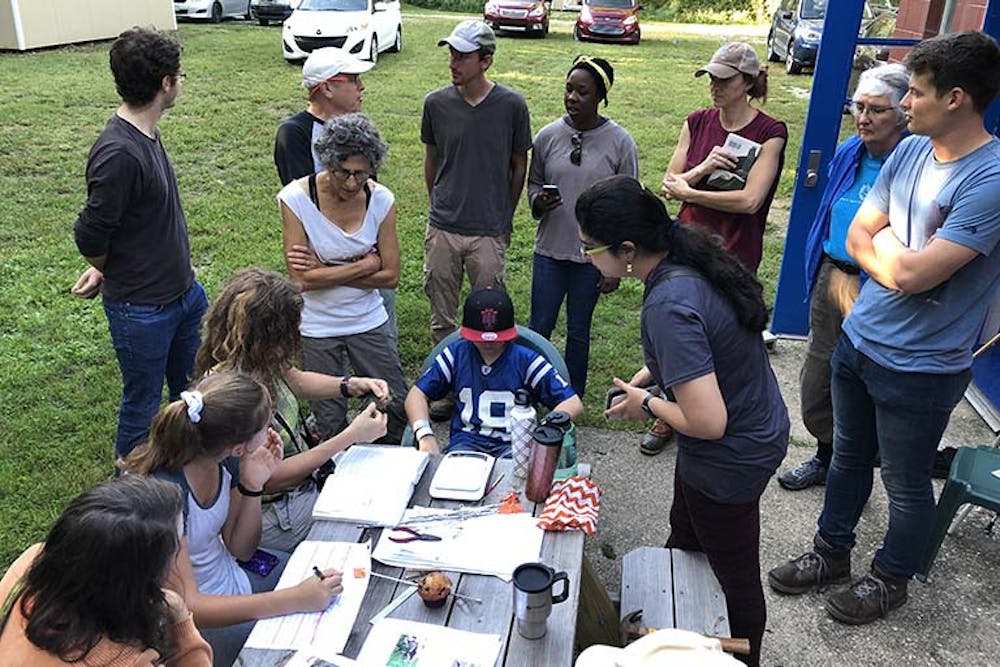IU announced the founding of the Midwest Center for Biodiversity, located at Kent Farm outside of Bloomington, on Sept. 21. As a part of the College of Arts and Sciences, the center is a space for researchers studying biodiversity loss locally and regionally.
Co-directors Ellen Ketterson, an IU biology professor, and Alex Jahn, an IU biology research scientist, were inspired to establish the center after reading a 2019 report on the decline of bird populations in the journal “Science,” which indicated a population decrease of 3 billion birds since 1970.
“That really raised an alarm about how we need to fast track our research toward addressing these losses in biodiversity to try to stem the losses as quickly as possible,” Jahn said.
Additionally, the pair saw the need for a center at IU because of a lack of similar organizations in the Midwest.
“So many non-governmental organizations that are focused on [biodiversity] are on the coasts,” Ketterson said. “Really, there are very, very few organizations focused on the Midwest, and the Midwest has its own particular issues.”
Ketterson said these issues include urbanization and deforestation. Additionally, losing wildlife results in fewer seeds being spread and fewer pests being eaten.
Ketterson and Jahn, whose research focuses primarily on birds, said they realized addressing this loss in biodiversity needed a multidisciplinary approach. In addition to birds, the center will support research on topics like plant diversity and ecology, conservation law and the roles of insects and water in ecosystems.
The pair then included researchers from other departments, such as the Media School, the O’Neill School of Public and Environmental Affairs, the Conservation Law Center and the IU Environmental Resilience Institute, in the development of the center.
“If we’re going to be able to stem the losses — which is our goal — then we’re really going to need expertise beyond just what Alex and I have,” Ketterson said. “We know those birds are missing. We know they’re still declining.”
To reach that goal, the center is hosting undergraduate and graduate research to investigate the causes of the declining bird population. For one ongoing project in collaboration with researchers at Ohio University, students are examining the impact artificial light at night has on birds’ migratory behavior and physiology.
[Related: IU researcher receives grant for research into sex chromosome fusion]
For another project, Malaak Alqaisi, an IU sophomore studying biology, is studying fatal bird crashes in windows around Bloomington.
For the survey, a team of students went to campus buildings like the Biology Building, Tulip Tree Apartments, the Innovation Center and Luddy Hall to record the number of bird deaths near windows.
“They weren’t expecting much,” Alqaisi said. “That started in fall 2020, and by fall 2022, they had recorded 351 deaths just due to window strikes.”
Alqaisi said this number is an underestimate of the total number of birds dying on campus because researchers only collected data twice a week during the fall and spring semesters and landscapers may have disposed of some of the birds.
Her role is to survey Bloomington locals — everyone from homeowners to landscapers to local architects — to come up with a viable solution to the window strikes that will benefit all groups.
Alqaisi said two such solutions are using patterned window films, such as those with straight lines and dots, and turning off the lights near windows at night, as birds are naturally attracted to those lights. She says that taking steps like these to protect birds from strikes are important to the center’s goal of limiting biodiversity loss.
“Birds are very crucial to the preservation of biodiversity and the functioning of ecosystems,” Alqaisi said. “Migratory species especially are disproportionately affected by window strikes. They also have very important ecological functions such as seed dispersal, so protecting these species via solutions to window strikes is a big deal for Midwest biodiversity.”
The center is collaborating with other organizations across the country to study these issues.
[Related: City of Bloomington to plant hundreds of trees 2023-24]
In order to track bird movement across the changing Midwest, researchers at the center tagged birds and set up three signal towers in Indiana as part of the Motus Wildlife Tracking regional network.
“You can’t study a phenomenon that’s happening across states, across borders by doing just local research,” Jahn said. “You have to collaborate inter-regionally.”
However, Ketterson said research can only go so far when addressing biodiversity loss.
“We can document, but then you have to change people’s awareness,” she said.
One way the center is raising awareness is through education programs hosted at Kent Farm, a research station located seven miles east of Bloomington that serves as the Midwest Center for Biodiversity’s home base, Jahn said.
Each summer at Kent Farm, the center and Bloomington’s WonderLab Museum of Science, Health and Technology oversee “From Feathers to Flight,” a camp for fourth through eighth graders to learn about bird ecology taught by local Montessori teachers.
“I’m really excited about that program because you can make an immediate impact,” Jahn said. “The children will remember this, maybe for the rest of their lives, and it could change their attitude toward conservation and nature as adults.”
Jahn said this community engagement is important for allowing the center’s research to translate into policy.
“When you have the insights that we have from our research on just the obvious loss in biodiversity that we’re seeing, I think we have our work cut out for us,” Jahn said. "Since we’re sure of that, the biggest hurdle is just getting the word out because we are not going to be able to do this without support from the community.”
[Related: IU approves climate action plan to achieve carbon neutrality by 2040]




